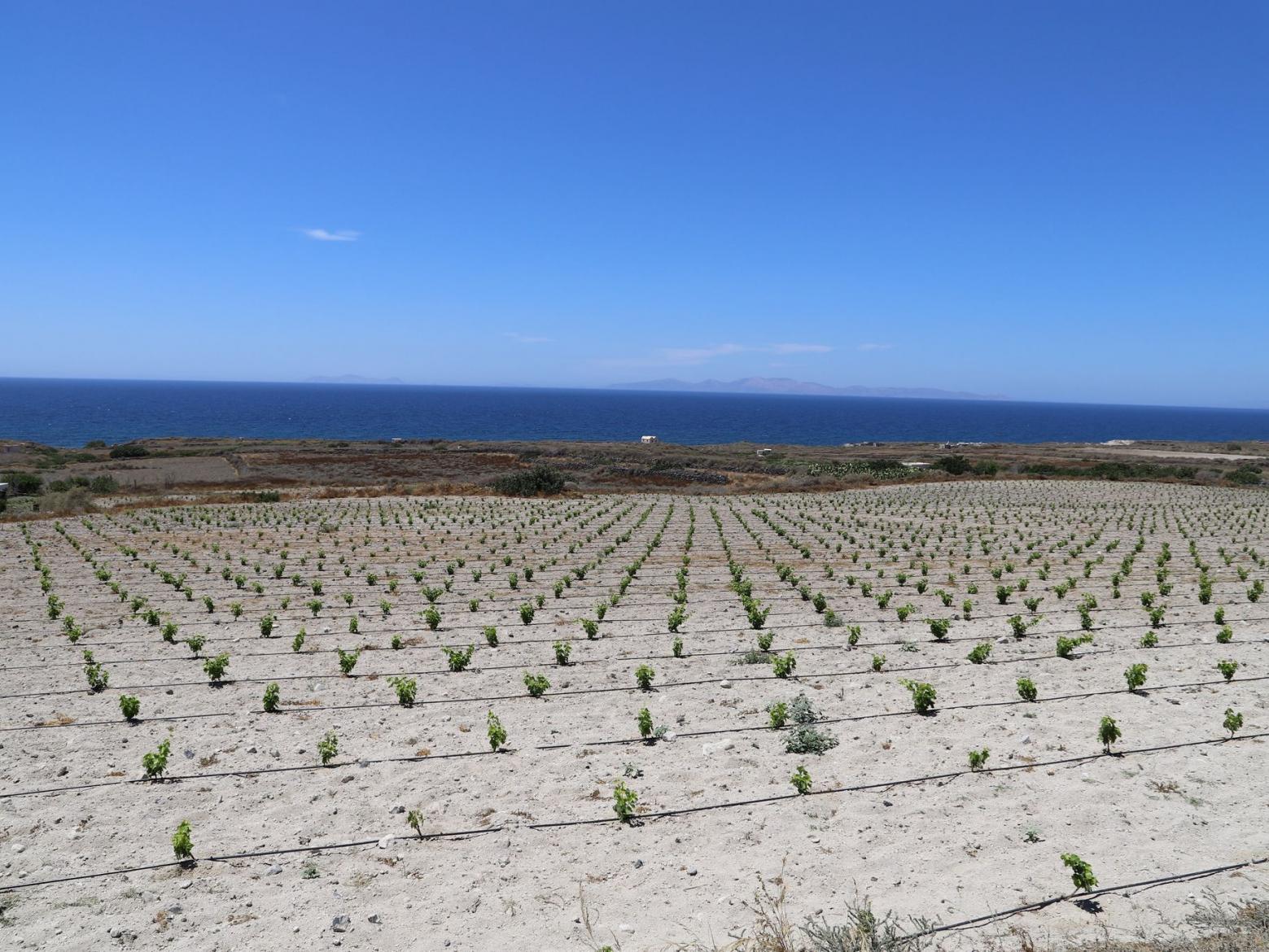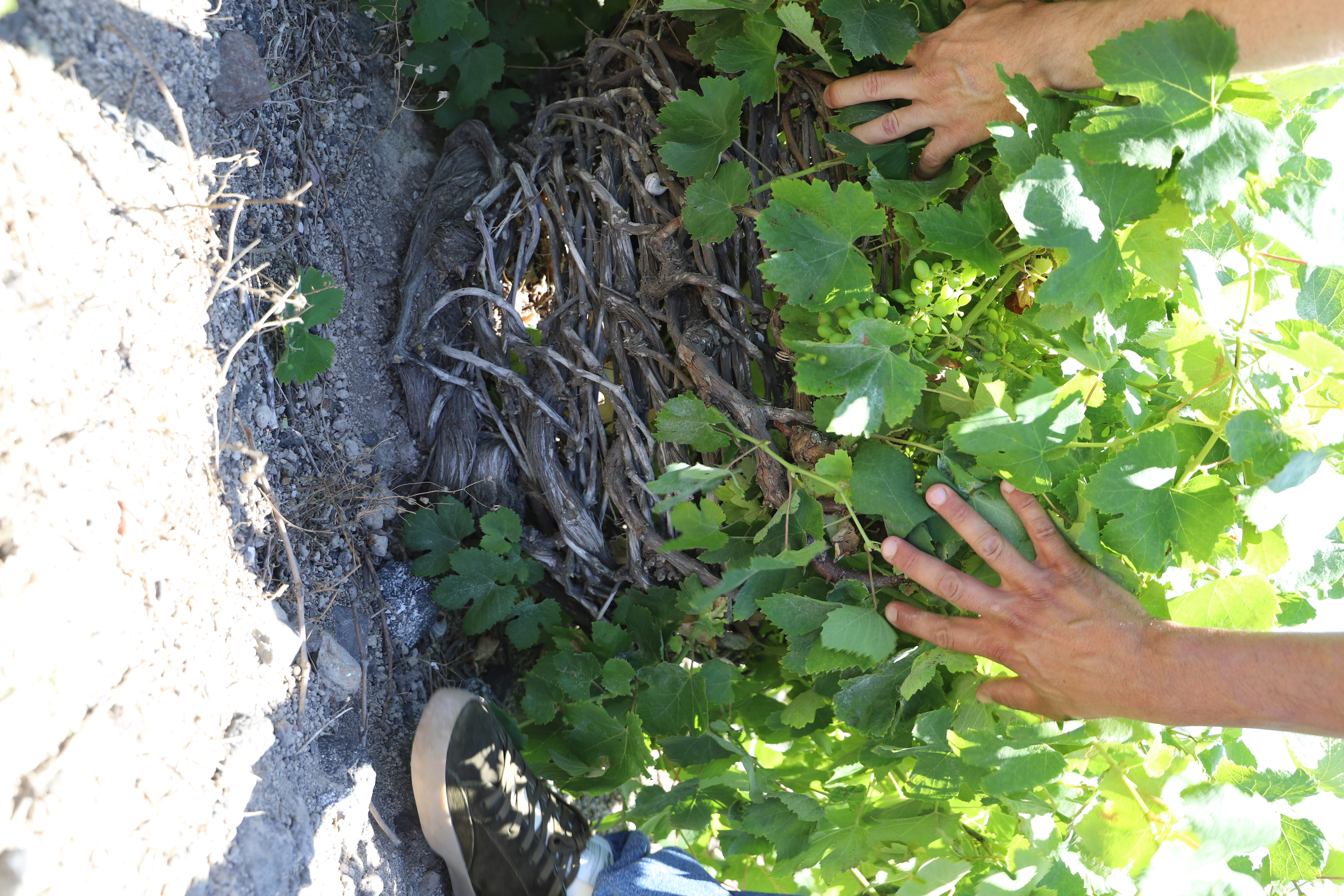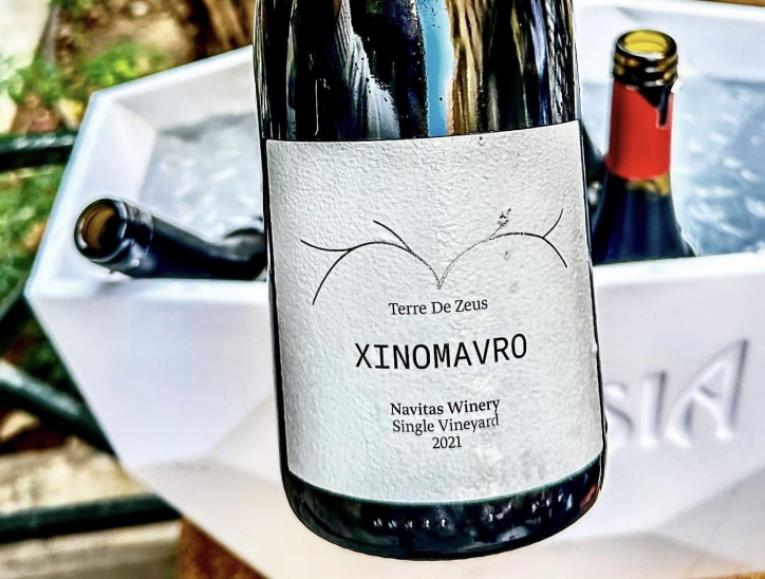Pirates of the Aegean Part 3: Santorini and Vassaltis
By Terry Kandylis
‘Never was anything great achieved without great danger’ said Niccolo Machiavelli, the Italian political philosopher circa around the dawn of the 15th century. And probably this is what Yannis Valambous had in mind in 2010 when he decided to leave his beloved London and a rather brief but successful finance career in the city to invest in Santorini and start the winemaking project of Vassaltis winery literally on the peak of the economic recession that hit the country. Back then it was the youngest winery on the volcanic island in the southern Aegean, that has become the cornerstone of Greece’s modern wine success story. Vassaltis derives from Basalt, a metamorphic rock of volcanic origin which is particularly associated with the terroir of Santorini.
The story though goes back a couple of decades ago when Yannis’ father decided to invest on the island and bought a property in the picturesque Caldera side of the island, which became their holiday house and now a wonderful boutique hotel run by his charming sister and her husband. Alongside with the property came around 4.5 hectares of vineyards, that for years the grapes were sold to the local co-op. Yannis thought it was his duty to do something with this ‘dirt’ and started actively to search for the best people to assist him on this risky but exciting and pioneering attempt. Elias Roussakis and Yiannis Papaeconomou, a young and talented winemaking duo that had previously worked on the island shared the same vision and the project soon after was taking off. A winery was constructed in the Vourvoulos area of Santorini and opened to the public in 2015, to welcome guests and oenophiles from around the world.
This young and dynamic team have managed to succeed in such a short period of time and the recognition from the local and international wine trade have catapulted them in the very top of the producers on the island. It wasn’t easy Yannis will admit. The business model was based on Assyrtiko sold for 1€ per kilo he will admit. Now sells for almost 6€ per kilo! This added pressure to secure more grapes from the growers on the island led Yannis and the team to look elsewhere. Where else can you look through, to find the same terroir and plenty of land to lease or buy that won’t cost you a leg and arm? The answer is, Therassia!
Therassia is part of the small, circular archipelago, included in the municipality of Santorini which is constituted by the inhabited islands of Santorini and Therassia, as well as the uninhabited islands of Nea Kameni, Palaia Kameni, Aspronisi and Christiana. Visiting Therassia is like going back in time Yannis will tell. That’s the way he remembers Santorini when he was visiting the island together with his family during their summer holidays. Despite being a very short 10min ferry ride across from Oia, the island has a single gas station and most cars don’t even have registration plates! There is a caldera as well, may be less dramatic than Imerovigli or Oia, but has the same charm and magestic views. The day we visited, we barely saw anyone walking on the streets apart of the mayor who welcomed us and treated us with a refreshment under the scorching summer sun.
Yannis and the team leased a parcel from the monastery of Amorgos, the easternmost island of the Cyclades island group. For most Greeks, the Church has a positive connotation and surely religious or not, we should thank the monks for saving these parcels. The other parcel was bought and planted with raw material from their vineyards in Vourvoulos. Total new acreage under vines is approximately 3.5 hectares, planted at 3000 vines per hectare. One more hectare is getting ready to be planted in February. This brings their current holdings to 12ha in total, owned and leased together. Their plan by the end of 2026 is to manage 20ha of vineyards, with the lion’s share of course to be Αssyrtiko (80%), 15% of Mavrotragano & 5% Aidani.
There are various styles of Santorini Assyrtiko as Yiannis Karakasis MW explains in his detailed Terroir Report on Santorini. Some focus on the leaner, precise and Chablis-like style of the grape. Some focus on the textural aspect, rich, generous and voluptuous. Vassaltis’ team takes a fruit-forward approach that is immediate and consumer-friendly, with some wines that lie more on the second camp described above. And this comes without sacrificing the unmistaken minerality and saltiness of the grape and the terroir.
Tasting their Santorini 2016 confirmed to me not only the potential of this superb vintage but as well that we, unfortunately, drink the top wines too early. This is a wine based on 100% Assyrtiko and fermented in a typical, white wine vinification with whole clusters pressing, fermented in stainless steel tanks under controlled temperature. The wine remained on its fine lees for 6 months before release. Sophisticated and poised, has just started to enter into the most interesting plateau of Assyrtiko to my liking after 3-4 years in bottle, showing some evolution in the nose, but with a fantastic sharpness and precision on palate. Definitely a keeper for another 4-5 years.
The Gramina Cuvée des Vignerons is a selection of plots from the Vourvoulos area and the wine made almost in the same fashion as their Santorini. Though it spends 12 months on the lees and 7 more in the bottle before its release into the market. 2018 shows the warmth of the vintage in terms of the fruit-driven and forward character. Quite expressive already with stone fruit complexity and herbal undertones. The generosity of the alcohol is well masked by the acidity that makes it linger on the palate for quite a long time. This is in such a young stage and I believe that needs definitely a couple of years before we see the full potential.
Their 2018 Barrel Aged Assyrtiko is as well whole cluster fermented in a stainless steel tank and then finished in French oak barrels of 500lt. It remained for 6 months in the barrels, then transferred for 5 months in the tank with its fine lees and remained an extra 8 months in the bottle. Despite being against oak & Assyrtiko myself, I have to admit that this very well made. At this early stage of its life, the nose shows more the touch of the wood, with the vanilla and sweet oak character. On the palate is showing more citrus fruit, with refreshing acidity, well structured and balanced with the oak which adds texture and weight.
Vassaltis’s top Cuvée is called Plethora. Plethora, meaning a large or excessive amount of something couldn’t describe better this wine. Fermentation in old oak casks, short biological ageing, oxidative ageing for 8 months and then 2 years ageing in the bottle, has all the character, intensity and weight to be plethoric. Toasty, nutty, confirming all hints of the oxidative nature, with a salty and zesty tang. Long, complex, multi-layered. Essentially a Nykteri in style without being labelled as such, it was the best wine to compliment the rabbit we had for lunch in Therassia. Rabbits are known to eat the young shoots of vines and could be a hazard to viticulture, though the locals have them in their local diet and keep their numbers controlled as snakes have long disappeared from the island.
Maybe Therassia could be the example in the following years and I just hope the synergy between people and nature will keep on giving us more of these treats in future.





